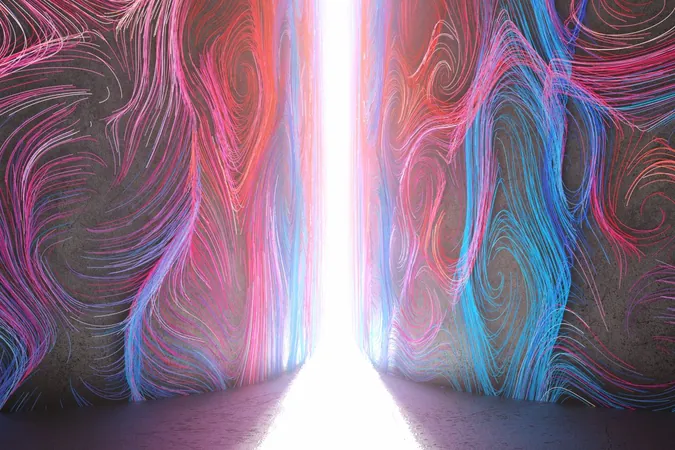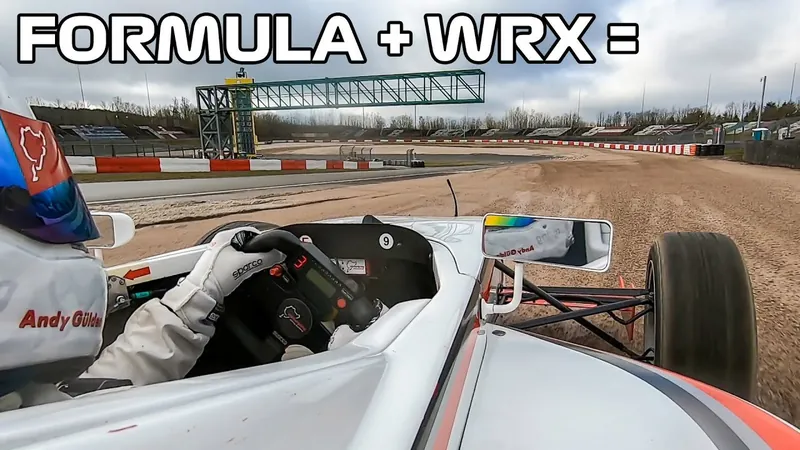
Groundbreaking Experiment Challenges Long-Held Quantum Theories
2025-07-08
Author: Jia
A Quantum Clash: Experiment vs. Theory
In a remarkable twist for the world of quantum physics, a new experiment measuring the quantum tunneling of photons between two waveguides has raised eyebrows, presenting results that significantly challenge established deterministic interpretations of quantum mechanics. This innovative study is being hailed as a crucial test for theories once thought indistinguishable from conventional quantum mechanics.
The Copenhagen Interpretation Explained
Founded in the early 20th century by luminaries like Werner Heisenberg and Niels Bohr, the Copenhagen interpretation posits that particles only acquire distinct properties—like traveling as a particle or a wave—when they are observed. Here, a particle’s traits are defined solely by its wavefunction, with the square of this wavefunction dictating the probability of finding the particle in a specific state upon measurement.
Bohmian Mechanics: A Controversial Alternative
Contrasting sharply, the Bohmian mechanics perspective, supported by figures such as David Bohm and Louis de Broglie, argues that a particle's properties are consistently defined through a non-local 'guiding equation.' In the celebrated double-slit experiment, it suggests that a particle passes through one slit or the other rather than both, with the probabilities determined by this guiding equation, which can change depending on experimental conditions.
Although most physicists generally favor the Copenhagen interpretation, they recognize that both models yield equivalent predictions in tests, a strikingly paradoxical fact.
The Groundbreaking Experiment
In an audacious move, Jan Klärs and his team from the University of Twente in the Netherlands have reported a groundbreaking experiment that may hinge on contrasting predictions from these two theories, with exciting implications for the future of quantum mechanics. By arranging two waveguides in close proximity, the researchers sent light pulses through one, causing photons to quantum tunnel into the adjacent waveguide. This process allowed them to infer the speed of the photons based on tunneling behavior and distance.
To up the ante, the researchers introduced a potential barrier into the first waveguide. While many photons were reflected by this barrier, a diminishing 'evanescent field' inside was observed. Bohmian mechanics aligned with standard quantum mechanics regarding particle density here, yet it posited that the particles’ velocity was effectively zero.
Yet, upon analyzing the energies of the photons, the researchers discovered that those anticipated to travel faster ventured further before tunneling, suggesting a direct interpretation of this finding as a speed measurement, which discrepancies with the guiding equation.
Skepticism and Insights
Commentary from experts in the field provides a skeptical lens. Sheldon Goldstein from Rutgers University expressed concerns that the interpretation of particle behavior within the potential step might not accurately reflect Bohmian mechanics, hinting that further inquiry into the results' implications is needed.
Similarly, Aephraim Steinberg from the University of Toronto urged caution, arguing that the conditions under which the measurements were made merit deeper discussion within the scientific community. However, Steinberg acknowledged the ingenuity of the experiment, highlighting the complexity surrounding notions of particle durations—a topic often thought straightforward, yet filled with layered nuances in quantum mechanics.
The Future of Quantum Mechanics?
As this experimental saga unfolds, the implications could provoke a substantial reevaluation of quantum theory's foundational interpretations. With ongoing debates and further research, the physics community watches closely, eager to see how this cutting-edge exploration shakes the very foundations of quantum mechanics.



 Brasil (PT)
Brasil (PT)
 Canada (EN)
Canada (EN)
 Chile (ES)
Chile (ES)
 Česko (CS)
Česko (CS)
 대한민국 (KO)
대한민국 (KO)
 España (ES)
España (ES)
 France (FR)
France (FR)
 Hong Kong (EN)
Hong Kong (EN)
 Italia (IT)
Italia (IT)
 日本 (JA)
日本 (JA)
 Magyarország (HU)
Magyarország (HU)
 Norge (NO)
Norge (NO)
 Polska (PL)
Polska (PL)
 Schweiz (DE)
Schweiz (DE)
 Singapore (EN)
Singapore (EN)
 Sverige (SV)
Sverige (SV)
 Suomi (FI)
Suomi (FI)
 Türkiye (TR)
Türkiye (TR)
 الإمارات العربية المتحدة (AR)
الإمارات العربية المتحدة (AR)